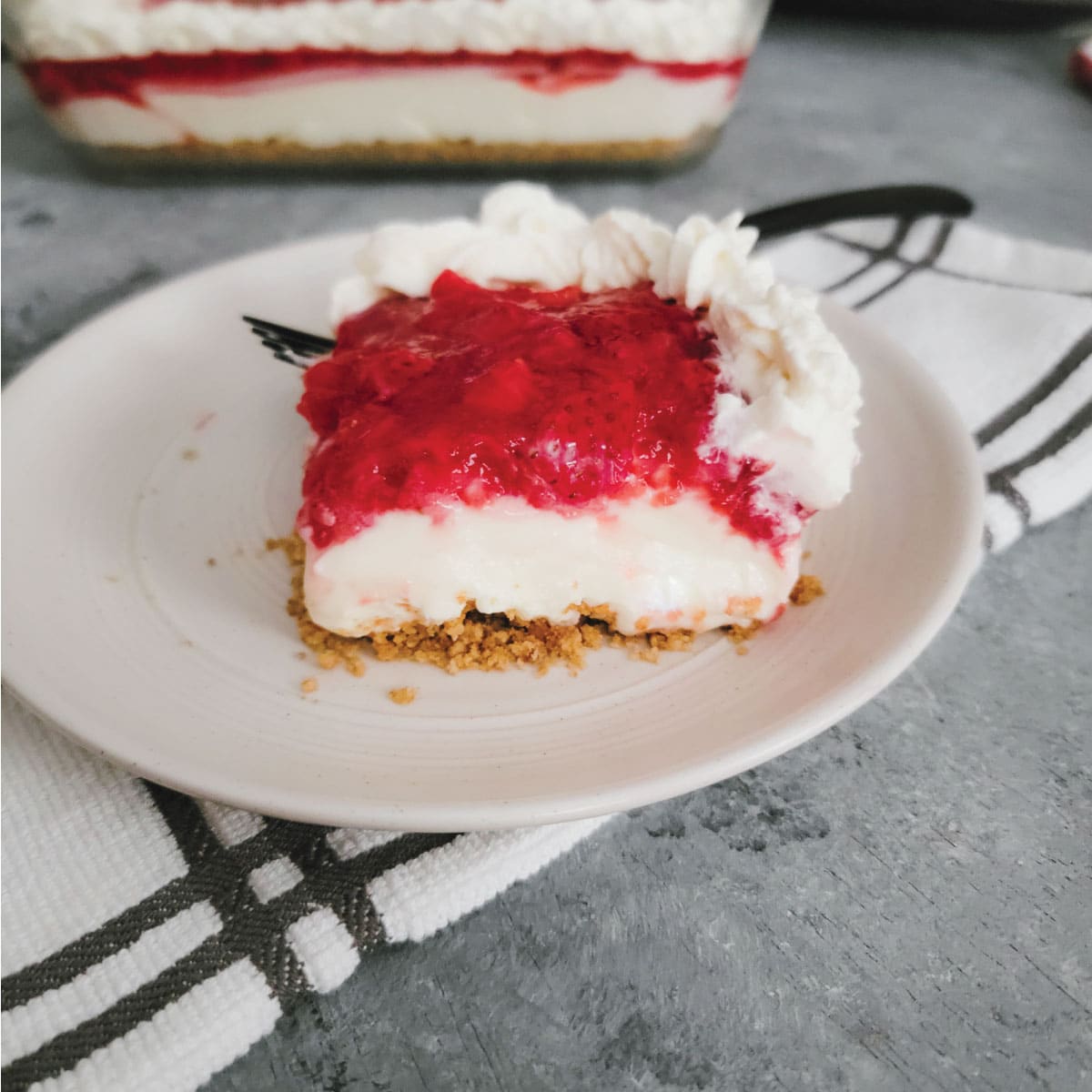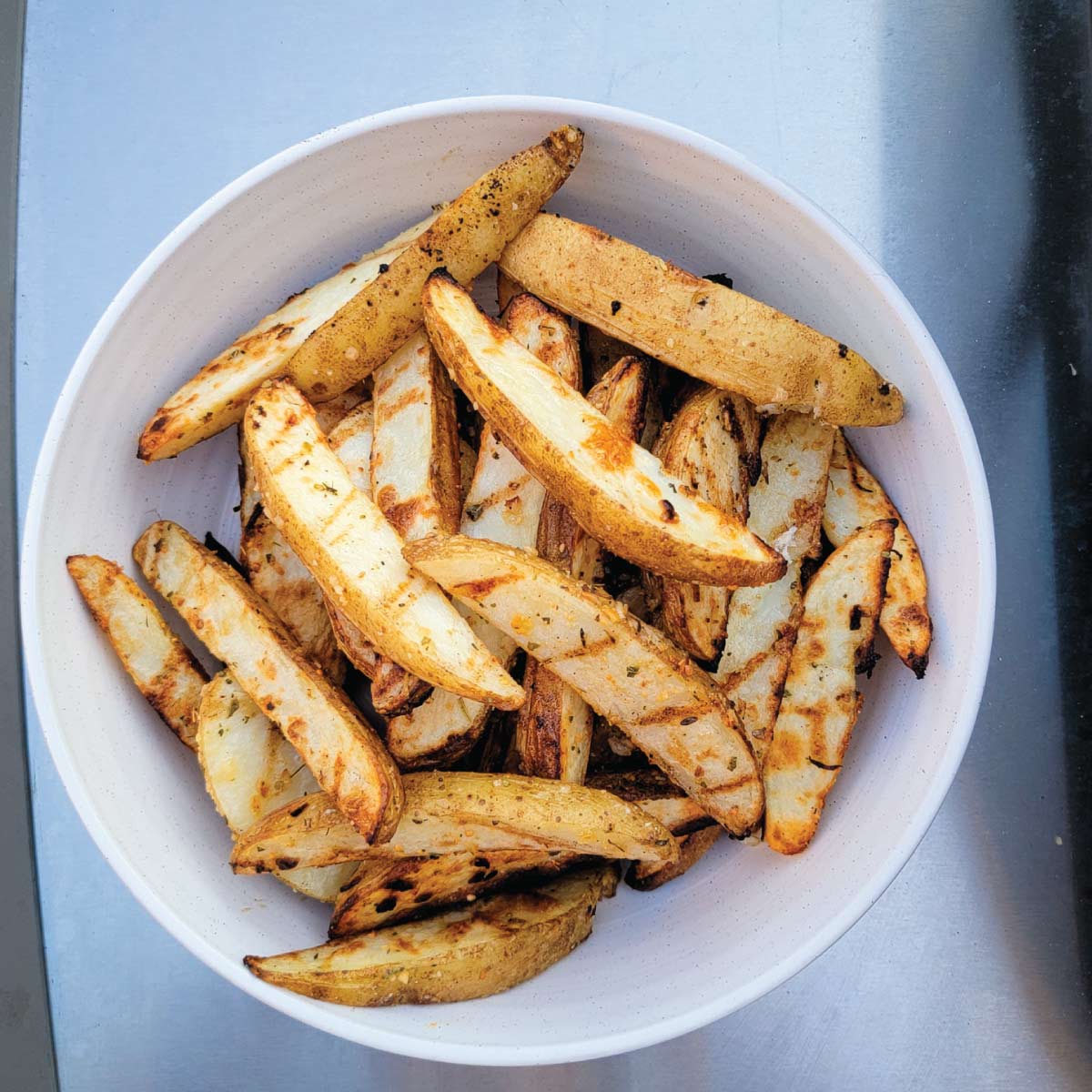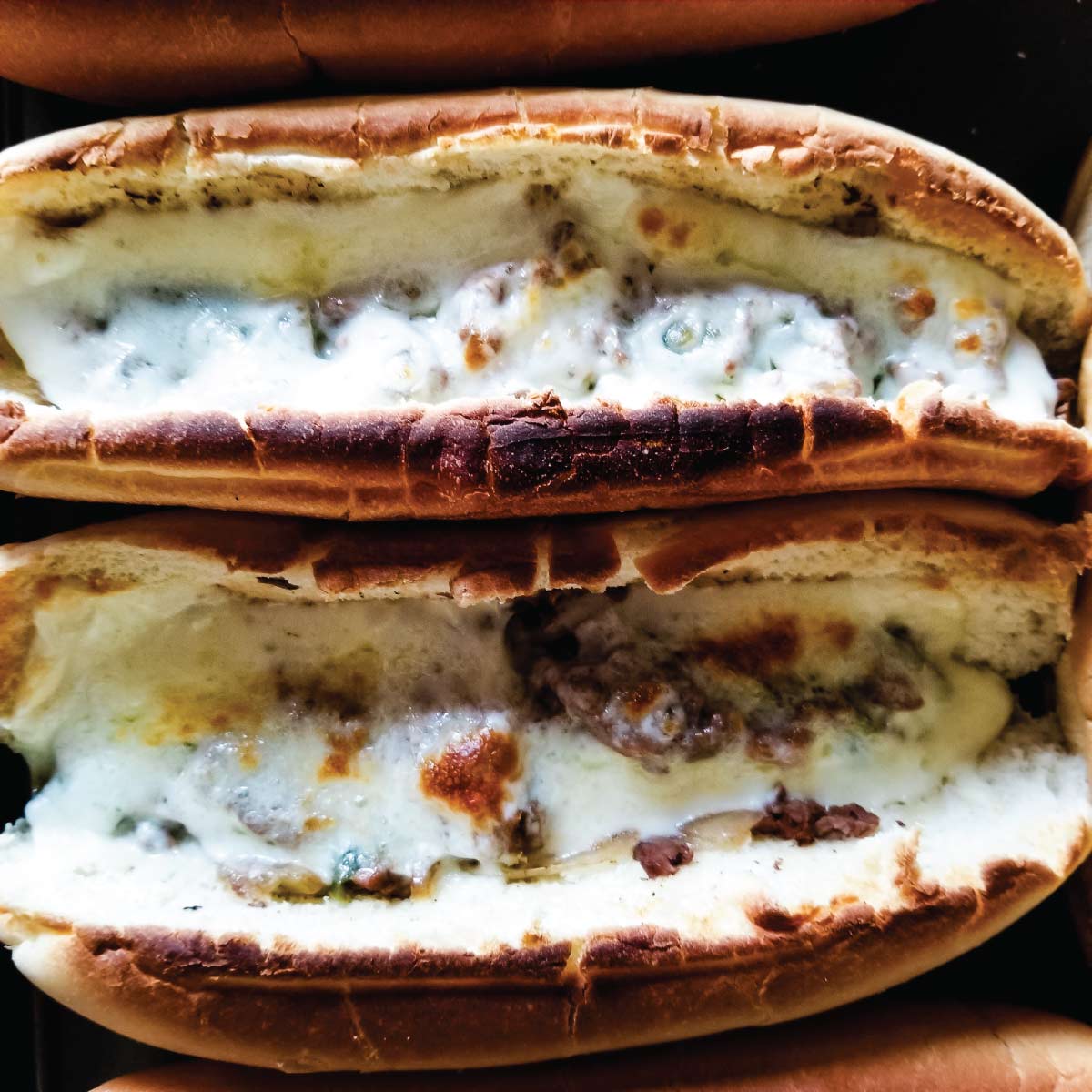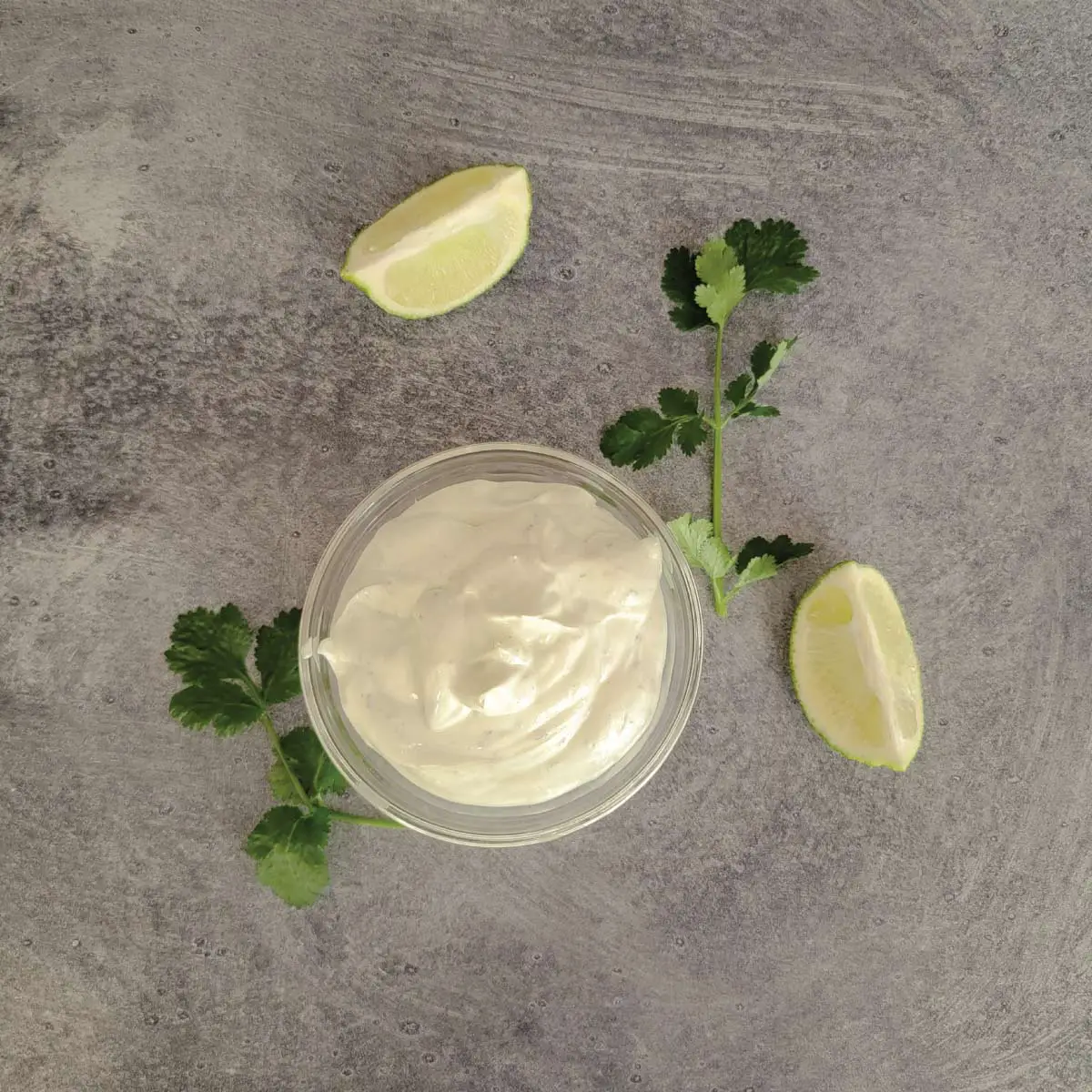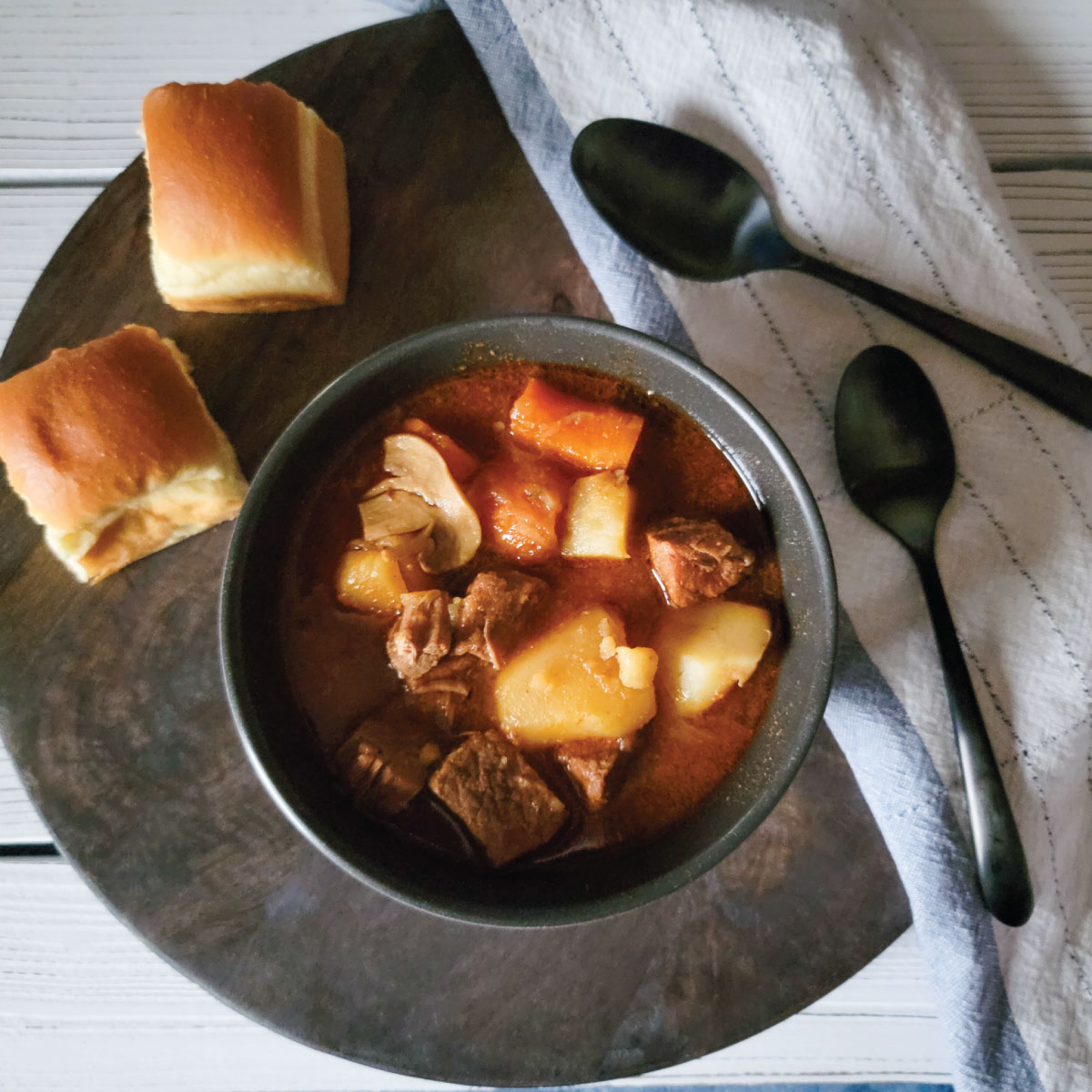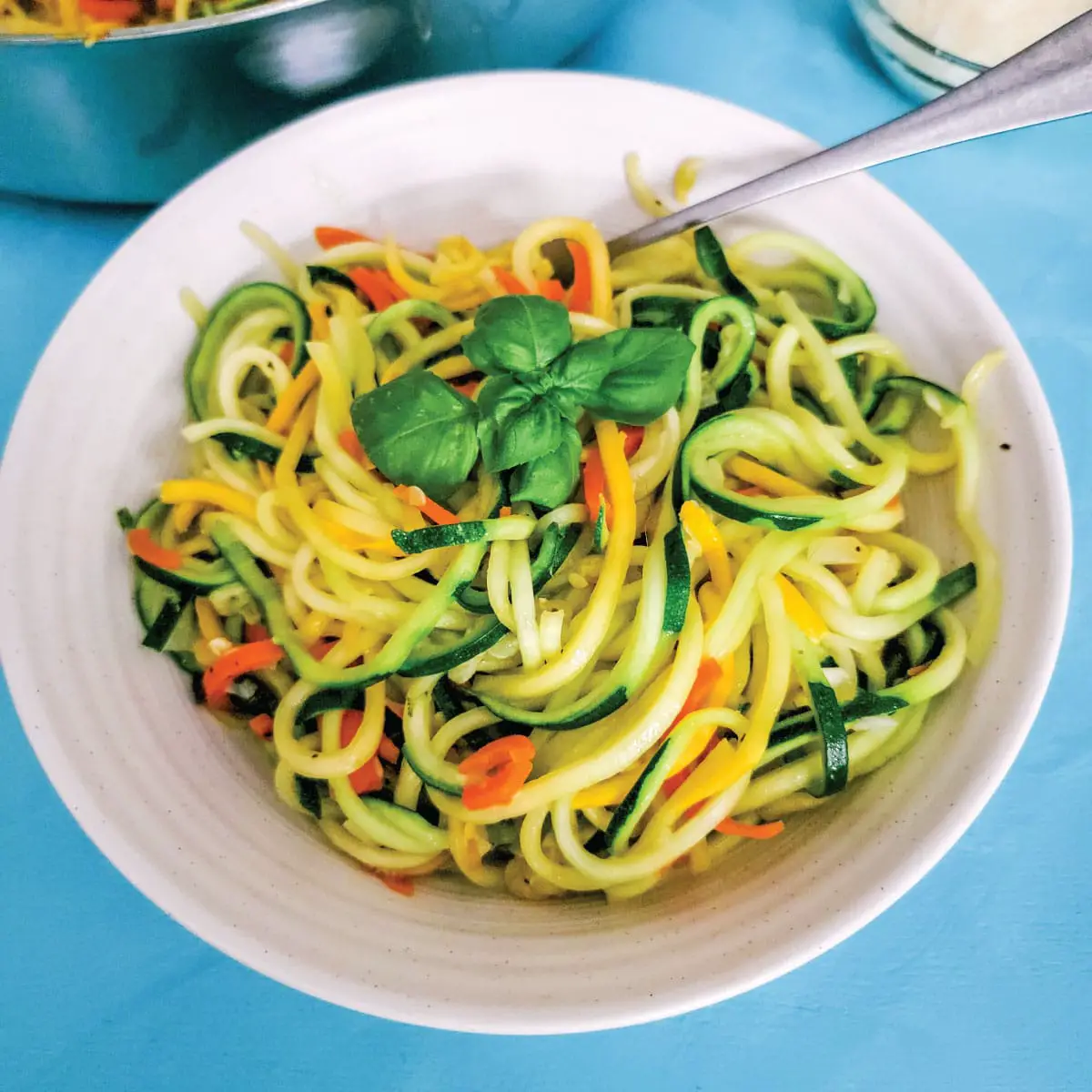Roast Chicken with Garlic and Lime
Lime adds an amazing but subtle citrus flavor to this simple whole roasted chicken recipe while keeping it juicy! The flavors of garlic and rosemary are the perfect combination with the lime.
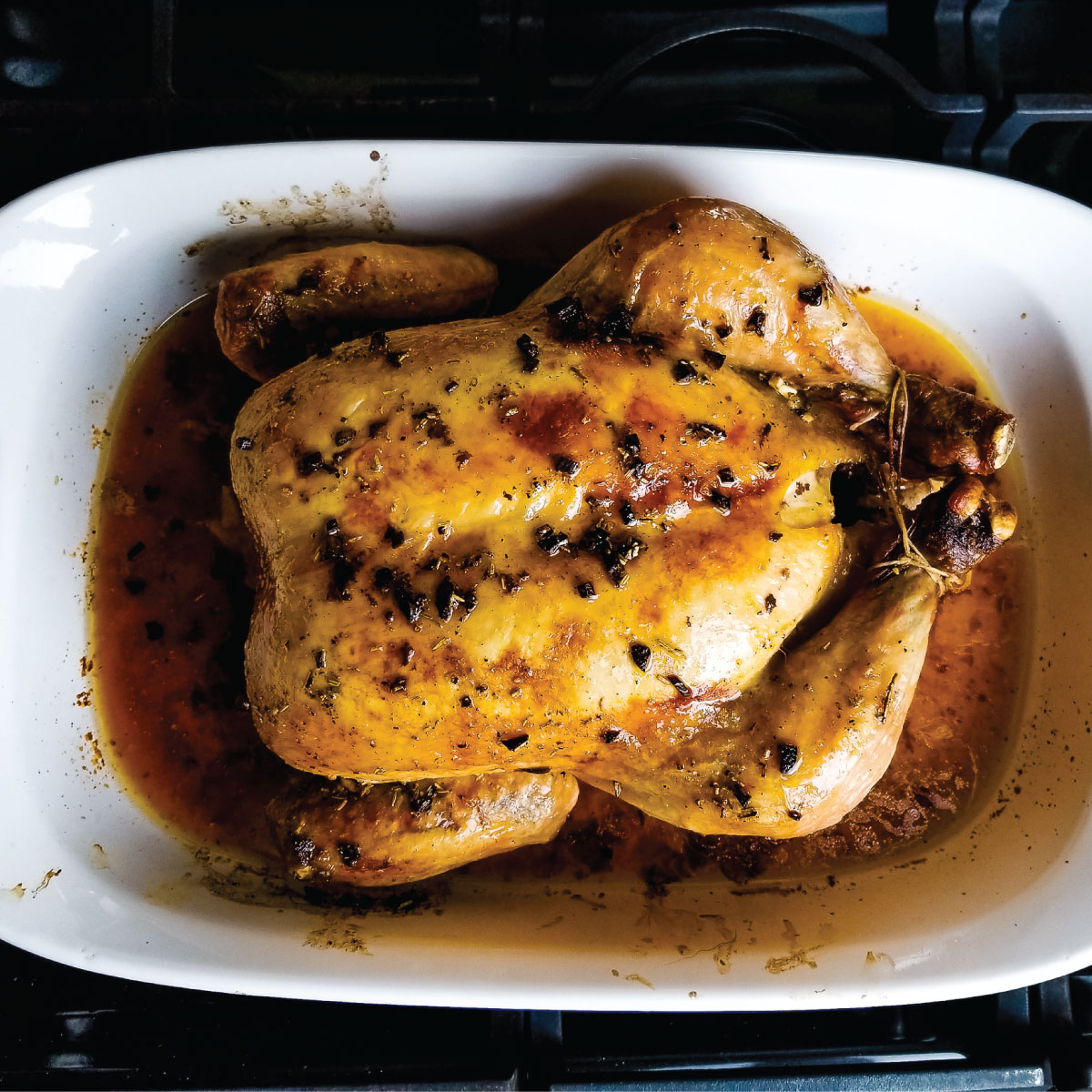
Roasting a chicken is one of my favorites and it is the first thing I make when the weather is cool enough to have the oven on! Sure we can make it on the rotisserie on the grill, but a baked chicken with lime on a cool night is amazing and something to look forward to!
We make stuffing to go with our chicken quite often, but we never stuff the bird. We use homemade bread cubes for stuffing or we buy the stuffing cubes and make the stuffing homemade. You can use homemade broth or store bought chicken broth for the stuffing.
We use affiliate links on our site. This post may contain affiliate links and we may earn a commission on qualifying purchases. Please see our affiliate disclosure for more details.
Should I cook the stuffing in the chicken?
We do not recommend stuffing the chicken. Stuffing in the cavity takes up some of the moisture from the chicken or one thing instead of adding to it. Have you ever had stuffing that was roasted with the bird? It’s all mushy, right?
When there is stuffing in the cavity of a chicken, it takes longer for it to reach a safe temperature. This in turn dries the breast meat out – or it can dry the meat out. The stuffing needs to be up to temperature as well as the rest of the chicken or you are running the risk of undercooked chicken juices in your stuffing.
We also do not recommend it because you will have juicier meat if you have seasonings and a lime in the cavity in place of stuffing.
For safety and flavor reasons, we never stuff a chicken or a roast turkey.
This is a recipe is for how to roast a chicken without stuffing.
The ingredients
There are not a lot of ingredients here as we try to keep it simple but flavorful!
The chicken – We like to get Purdue chicken (personal preference for whole chicken no affiliation), but you can use your favorite brand. You can also get the size you need, we get between 6-7 pounds.
Butter – You can substitute margarine for butter, but I think butter is better here. It is up to you for salted or unsalted. We use salted, but unsalted works great too.
Garlic – Fresh cloves work best here for flavor, but you can use garlic powder if needed.
Lime – This is a great flavor enhancer and also makes the meat a little more juicy. You can leave it out if you do not have one, but it is better with it. You can replace the lime with a lemon if needed.
Rosemary – We use dried rosemary here for the topping, but you can cut up some fresh rosemary leaves as well. You can also put a sprig or 2 in the cavity for extra flavor! We use dried in the topping as it blends nicely with the butter and other flavors, but fresh is definitely ok.
Salt and Pepper – For the salt, you can use sea salt or table salt here. If it is coarse salt be sure to grind it finely with something like a mortar and pestle. You can also use fresh ground peppercorns in place of already ground black pepper.
Making the seasoning mix
This is how we make it for the best flavor. If using garlic powder instead of fresh chopped garlic, you can skip heating it together.
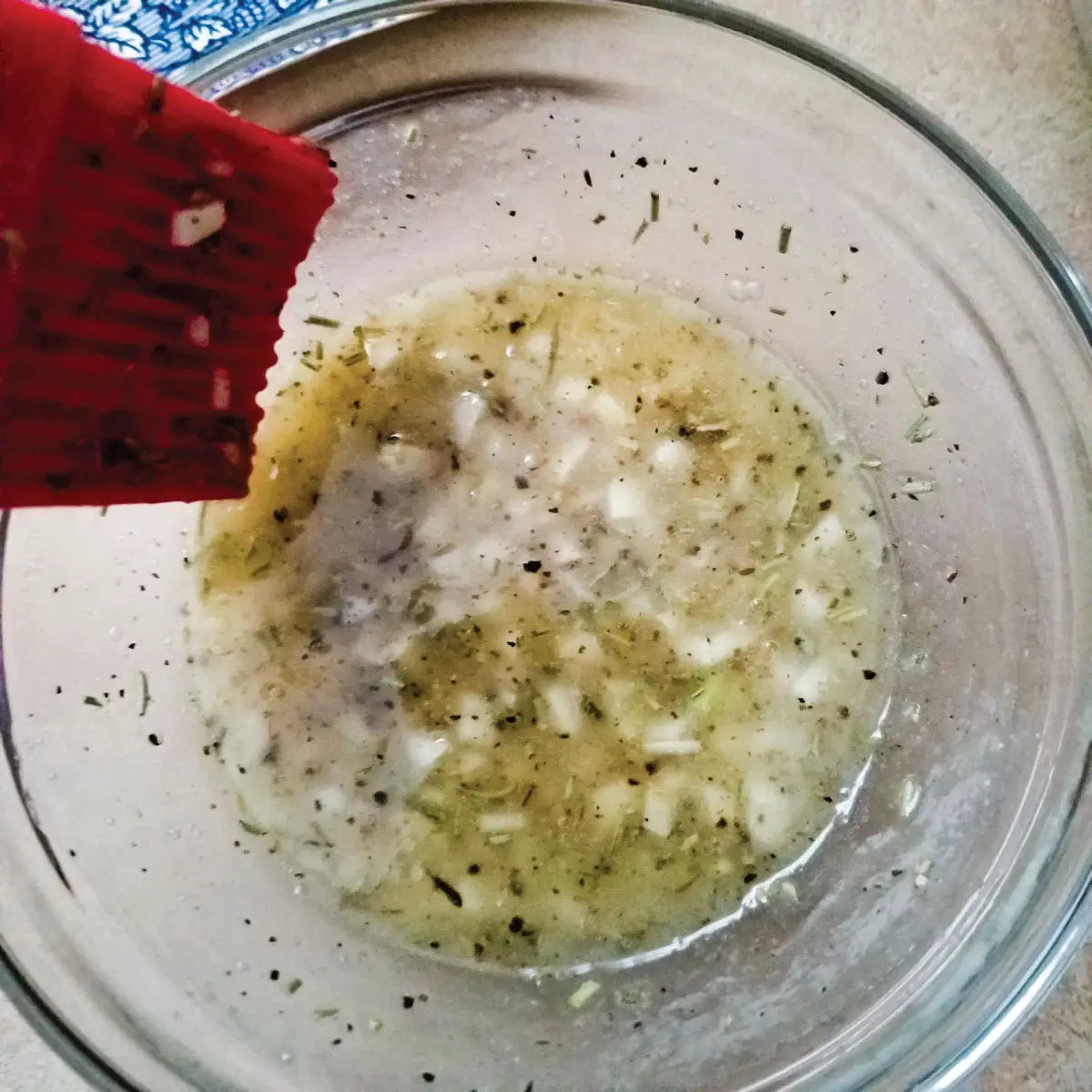
Place the butter, rosemary and chopped garlic in a small saucepan. Once the butter melts, cook for about 30 seconds to a minute on medium low heat. You do not want to brown the garlic.
Why cook the garlic and rosemary in butter first? It gives the butter the flavors of the garlic and rosemary. When you spread the butter mix on top of the chicken, it has flavor throughout and not just where the spices sit on the chicken.
Can I use the microwave instead of stove? Yes you can but the stove is better. You will add the butter, rosemary and garlic in a bowl. In the microwave keep an eye on the butter and use 10 second increments so you do not splatter butter all over. You will use the increments until the butter is melted, then it is ready for use. It will splatter if you try to heat it after melting butter.
Once your butter and seasoning is ready, you can add the salt, pepper and lime. I do not add the salt, pepper or lime until after removing from heat.
For the lime – I gently hand squeeze juice from half of the lime and add it to the melted butter. This leaves some of the juice along with the pulp in the peel still. Set both halves aside, you need that inside the chicken cavity.
The other half gets hand squeezed over the chicken before brushing the butter mix on it.
Prepping the Chicken
Take the chicken out of the fridge and remove all the giblet. Rinse the inside and outside of the bird with cool water and pat dry. Place in a baking dish – I often use a glass 13×9 dish here, but a roasting pan with a rack is great too.
You want to preheat the oven before taking the chicken out so the oven is perfectly up to temperature.
Take the 2 tablespoons of butter that was not melted and cut it into smaller chunks. Gently push each chunk under the skin that covers the chicken breast. You want to lift the skin carefully away enough to squeeze butter pieces under the skin. Do not remove the skin.
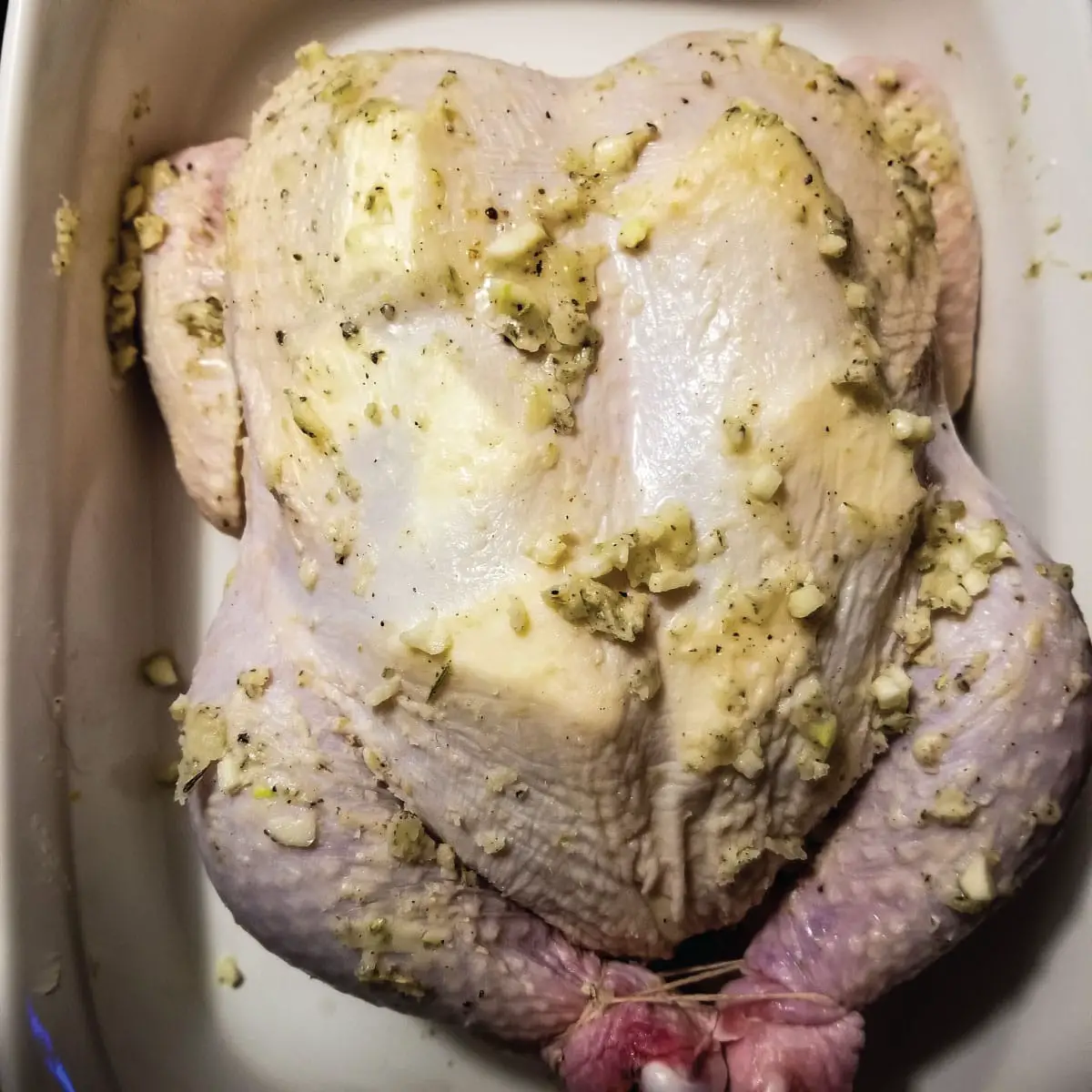
I like to tuck the wings under as pictured above, but this is preference and not required. It helps keep the tips of the wings from getting too browned or even burnt. If you are going to tuck them, do it before coating with seasoning! But do not tie the legs yet.
Using a brush you want to brush the melted butter/seasoning mix all over the chicken. Your butter will start to solidify and it is ok. Just do your best to evenly spread it across the chicken – your chicken is colder then melted butter so there is no way to prevent this.
Place the lime pieces and garlic cloves (2 of them quartered) inside the cavity of the chicken and tie the legs using kitchen twine.
Your roast chicken is now ready for the oven!
Roasting the Chicken
I add just about one half a cup water to the bottom of the dish. This is not required but adds some extra juice for if you are going to use it for gravy!
Be sure your oven is well heated. Heat for at least 15-20 minutes even if your oven shows it is up to temperature, it can take an extra 5 minutes to reach the actual temperature. An oven thermometer is great for testing the temperature inside the oven.
For a conventional oven (one without a fan) – You want to cook at 450 degrees Fahrenheit for 10 minutes before dropping the temperature to 350 degrees Fahrenheit. Continue cooking until it reaches a temperature of 165 degrees Fahrenheit when a meat thermometer is inserted in the thickest part of the thigh. Just be sure you are not on a bone when testing temperature. For the cooking time, I go by 10-15 minutes per pound.
For convection oven (one with a fan) – This includes conventional ovens that have a convection or roast feature (with a fan.) I recommend using the roast feature in this case. You want to cook at 425 degrees Fahrenheit for 10 minutes before dropping the temperature of the oven to 325 degrees Fahrenheit. Continue cooking until the temperature reaches 165 degrees Fahrenheit in the thickest part of the thigh – without touching a bone.
If your chicken is browning to fast before it is finished cooking, loosely cover with foil to continue cooking without much more browning.
Always let your chicken rest for 10-15 minutes before carving. I make the chicken gravy while it is resting.
Instant Pot mashed potatoes go great with a roast chicken, but you can serve with your favorite side dishes.
Frequently asked questions
While you don’t have to tie the legs, I highly recommend it. It helps to keep the air from circulating into the cavity below the breast meat. Without tying the legs together, you risk the breast meat drying out while the thighs and legs are still cooking to temperature.
If you don’t tie the legs, it is recommended you loosely cover the chicken with foil for the first hour of cook time.
You should use or freeze the chicken within 3-4 days after cooking. You can use it to make chicken soup, but I don’t recommend going beyond the 4 days before boiling it down.
This depends on the size of the chicken but on average it will be between 1 and a half to 3 hours. Ovens vary and this may vary based on altitude as well. It usually cooks for about 10-15 minutes per pound but always check the temperature instead of relying on cook time.
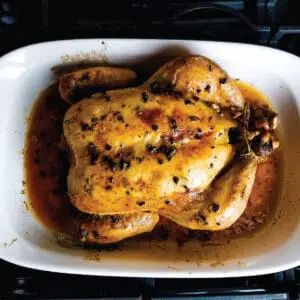
Roast Chicken with Garlic and Lime
Equipment
- kitchen twine
Ingredients
- 6½ pounds whole roaster chicken approximate
- 2 tablespoons butter cut into small pieces
- 1 lime cut in half
- 2 cloves garlic sliced in quarters
- ½ cup water if using drippings for gravy
Seasoning Topping
- 2 tablespoons butter (4 tablespoons for whole recipe)
- 2 cloves garlic chopped (4 cloves all together for whole recipe)
- ½ teaspoon rosemary dried
- ¼ teaspoon black pepper ground
- ½ teaspoon salt see notes
Instructions
- Preheat oven to 450°F or 425°F if using convection (or roast feature with fan.)
- Take the chicken out of the fridge and remove the giblets from cavity. Rinse the chicken in cool water, rinse inside and outside of the chicken. Pat dry with a paper towel and place in a baking dish (we prefer the glass.) I tuck the tips of the wings under the body to cook the wings evenly (they don't dry out on the ends.)
- Gently push small butter pieces (from the 2 tablespoons) under the skin above the breast meat. Be sure that the skin remains flapped over the meat, do not remove it.
- Cut lime in half. Using your hand, gently squeeze the lime juice from one of the halves over the skin of the chicken. Try to spread it evenly over the top of the chicken – the breasts, legs and thighs. Hand squeeze the juice from the other half into a small prep bowl.
- Place both halves of the lime (after squeezing the juice) and the 2 cloves of garlic that were quartered inside the cavity under the breast.
- Tie the legs together with kitchen twine. Add water to bottom of the baking dish along with the chicken.
- In a small saucepan add the 2 tablespoons butter (from the seasoning ingredients), the chopped garlic and rosemary. Cook over medium low heat until butter is melted. Cook for another 30 seconds before removing from heat.Pour into a prep bowl with the lime juice. Add salt and pepper, stir well.
- Using a basting brush, coat the butter mix all over the outside of the chicken. Butter will solidify in this step due to temperature difference but do your best to evenly coat it.
- Bake at 450°F (for conventional) or 425°F (for convection) for 10 minutes before lowering the oven temperature to 350°F for conventional or 325°F for convection. Continue to bake for about 10-15 minutes per pound. Check the temperature of the chicken, it should read 165 in the thickest part of the thigh and be sure not to touch a bone with the thermometer.
- If your chicken is getting too brown without being done, loosely cover with foil to continue cooking without any further browning.

